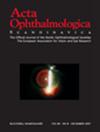Systems pharmacology demonstrates broad-spectrum efficacy in animal models of retinopathies
Abstract
Aims/Purpose: Excessive levels of the intracellular second messengers Ca2+ and cAMP have been linked with photoreceptor cell death during retinal degeneration (RD). We investigated if a combination (TMB) of common clinical drugs; tamsulosin and metoprolol (alpha- and beta-adrenergic antagonists, Gq- and Gs-coupled, respectively), and bromocriptine (a D2-like dopamine-receptor agonist, Gi-coupled), that inhibit intracellular Ca2+ and cAMP signaling could be repurposed to mitigate RD.
Methods: Drug efficacy was tested in four distinct RD models: rd10, P23H, and Rpe65−/− mice; and PDE6A−/− dogs. The duration of the drug trials ranged from 1-wk to 7-months. Drug serum levels were measured by liquid chromatography-mass spectrometry (LC-MS). We used primarily photopic and scotopic electroretinography (ERG) and optical coherence tomography (OCT) to assess drug efficacy. Molecular biology methods such as immunohistochemistry, immunoblotting, and RNA-sequencing (bulk and single cell) were used to document therapeutic mechanisms, as well as to confirm therapeutic effects.
Results: Dietary TMB improved cone function and slowed cone degeneration in P23H mice. In rd10 mice, both rod and cone function were significantly improved by TMB; and cone degeneration was significantly slowed. In dark-reared rd10 mice, the drug efficacy was associated with decreased lipid peroxidation preceding the onset of cone degeneration. Dietary TMB improved retinal function and optomotor responses in Rpe65−/− mice but did not halt rod or cone degeneration. Seven-month-long subcutaneous sustained infusion of TMB into PDE6A−/− dogs led to higher cone counts at the end of the trial. TMB mitigated forskolin-induced cAMP activity in an ex vivo retina preparation.
Conclusions: Our results suggest that simultaneous inhibition of Gs- and Gq-coupled receptors and activation of Gi-coupled receptors by a combination of existing drugs is a viable therapeutic strategy for RD.

 求助内容:
求助内容: 应助结果提醒方式:
应助结果提醒方式:


